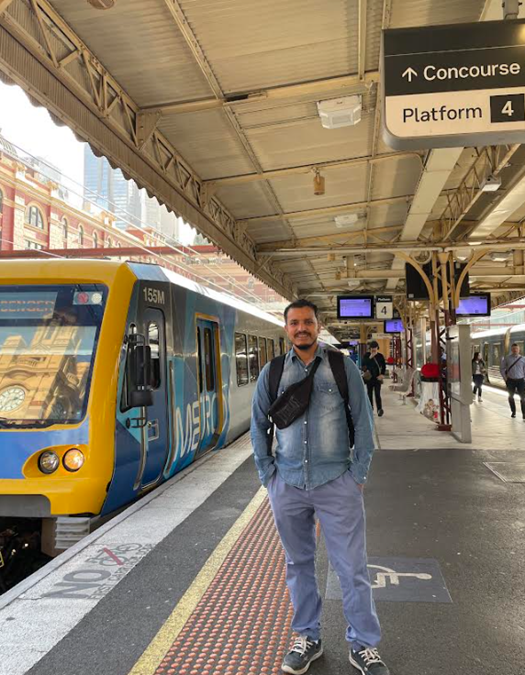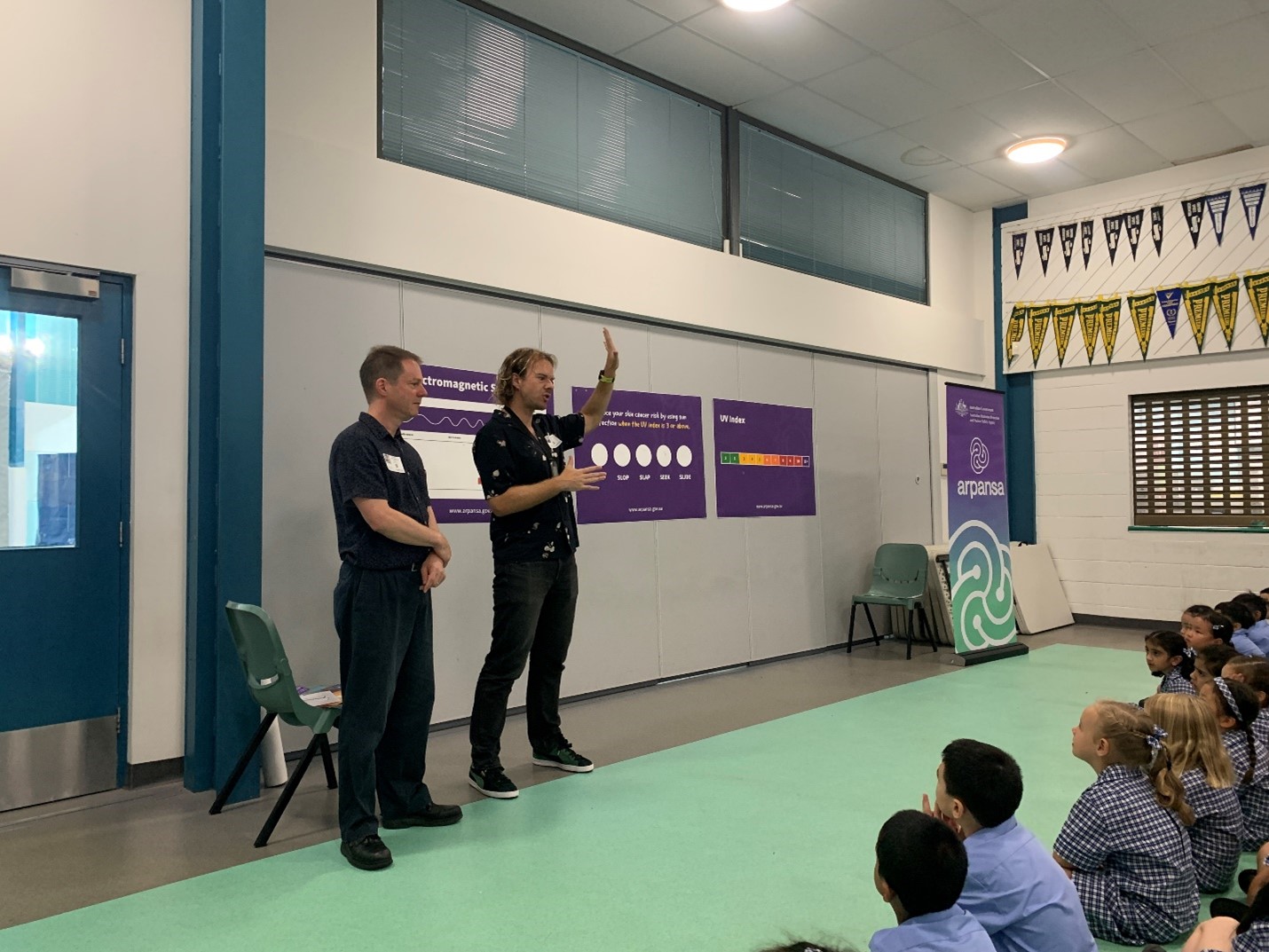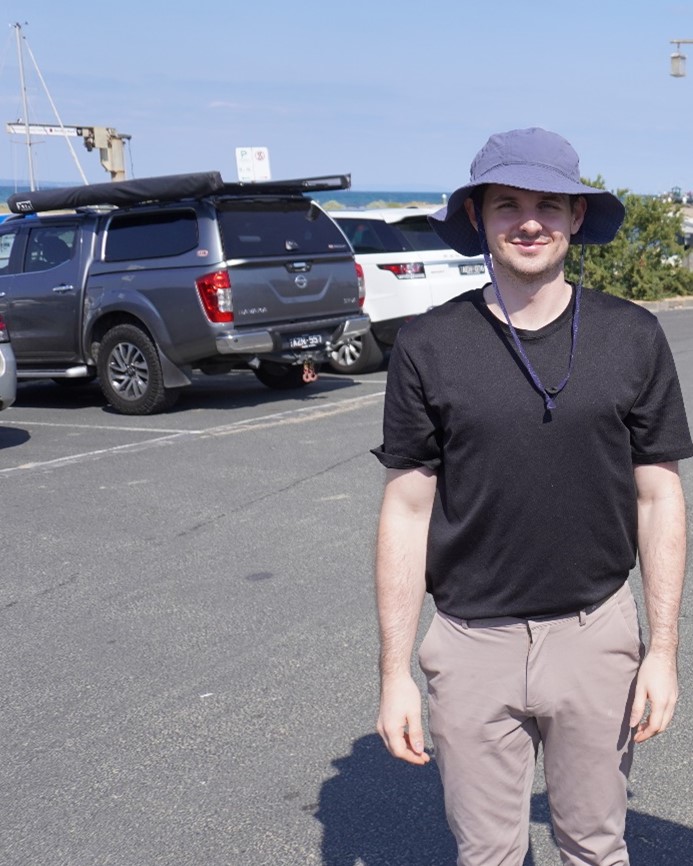
Greetings from ARPANSA’s Radiation Research and Advice team.
Welcome to the sixth issue of ARPANSA’s Electromagnetic Energy (EME) newsletter where we update you on the progress of our 2020-2024 EME Action Plan.
June 2024 was a particular highlight for the EME program team. Many of us attended the preeminent scientific conference on radio waves and health – BioEM. At this international conference, we also won the bid to hold the BioEM Conference in Cairns, Australia 2026! We’re thrilled by this news and already busy getting plans underway.
In this issue I’ll be highlighting our work engaging with international health authorities, assessing EME exposure in the community, and providing information to the public. I’ll also take the opportunity to introduce you to our new starter, Sean, who has quickly become an invaluable member of our team.
Please follow us on social media so you get updates on our activities as they occur.
Yours sincerely,
Sarah Loughran
EME Program Director
On behalf of the Radiation Research and Advice team:
Associate Professor Ken Karipidis, Assistant Director Health Impact Assessment
Dr Stuart Henderson, Assistant Director EMR Exposure Assessment
Dr Chhavi Bhatt, Science Officer (Measurement)
Rohan Mate, Science Officer (Research)
Dr Sean Hewson, Science Officer (Research)
David Sibenaler, Science Communications Officer
BioEM
BioEM 2024, 16 - 21 June, Crete, Greece

BioEM is the preeminent international scientific conference on the effects of electromagnetic field on biology and health. Attending BioEM is one of the key engagements in our calendar as it ensures that our science and advice remainsaccurate, up-to-date, and consistent with other important international bodies in this field. ARPANSA provided financial assistance to two PhD students from the University of Wollongong to attend BioEM in Crete. At the conference, Stuart gave a presentation on radio wave exposure in Melbourne; Rohan provided an update on his PhD into the potential health effects from occupational exposure to radio waves; and David presented on the EME program’s communication work.
BioEM 2026 Cairns

As I said at the start of the newsletter, we successfully pitched Cairns as the conference host city in 2026. We’re excited for BioEM 2026 in Cairns as it will give more local research scientists and industry experts the opportunity to engage with the latest electromagnetic energy research and protection practices for the benefit of all Australians.
Engage with international health authorites

Collaborating with the World Health Organization
As a World Health Organization (WHO) collaborating centre, ARPANSA provides support to its radiation protection activities. The team has been involved in updating the Establishing a Dialogue on Risks from Electromagnetic Fields handbook, contributing to two systematic reviews, and the task group on radiofrequency fields and health effects that is currently preparing the new Environmental Health Criterion Monograph. The WHO also recently redesignated this relationship with ARPANSA until June 2028.
The effects of radiofrequency exposure on cognition: A systematic review and meta-analysis of human observational studies
In June, one of the WHO’s commissioned systematic reviews that was co-led by Ken was published. It found that radio wave exposure from mobile phones does not affect learning, memory, attention span and other cognitive functions like coordination. This systematic review was a collaboration between ARPANSA and Monash University. ARPANSA’s Dr Chris Brzozek and Dr Masoumeh Sanagou also contributed to the study.
You can read the paper in Environment International.
ARPANSA works with international health authorities like the WHO to undertake research and develop evidence-based guidelines and statements that protect people and the environment from radiation.
Assess EME exposure in the community

Chhavi and Stuart led a Melbourne-based study that found that environmental exposure to radio waves from wireless technology has not changed significantly over the last decade. Published in peer-reviewed journal Environmental Research, the paper found that exposure remained well below 1% of the safety limits in the ARPANSA radio wave exposure standard with median exposure 0.19% of the limit in 2015 and 0.24% in 2022.
Rohan recently travelled to Sydney to undertake measurements in collaboration with the Australian Navy. This data will be used in his PhD on occupational exposure to RF EME.
Provide information on EME and health

Stuart and David went to a Melbourne primary school in February to educate children about sun protection and technologies which use radiation, such as mobile phones.
ICNIRP Chair Professor Rodney Croft and I provided information to the Northern Beaches Town Council in April to address community concerns about potential health effects from radio wave exposure. The presentation was well received, and I thank the council for their patience and for facilitating our request to have an evidence-based discussion with the community. I would also like to thank Professor Rodney Croft for providing his expertise and support.
You can watch and share the presentation here: https://www.youtube.com/watch?v=2JkENVd5a0o
Environmental EME report
We’ve been collaborating with the Australian Mobile Telecommunications Association and the Australian Communications and Media Authority for the last couple of years to update the Environmental EME Report. This report is given to the community to inform them about their exposure to radio waves from wireless technology infrastructure. The updated report will be published in July 2024. Community sentiment on the new EME Report will be monitored through our Talk to a Scientist service.
Welcome Dr Sean Hewson

Sean joined our team as a Science Officer (Research) in January 2024. He has a PhD in Chemistry from the Queensland University of Technology. Sean will be mostly working with Stuart to assess EME and UV exposure in the community. On a personal note, Sean enjoys running, rock climbing, and hiking. Sean has an easy-going, can-do attitude that has quickly made him an indispensable member of the team. I look forward to sharing some of the research that he is working on in the next newsletter.


